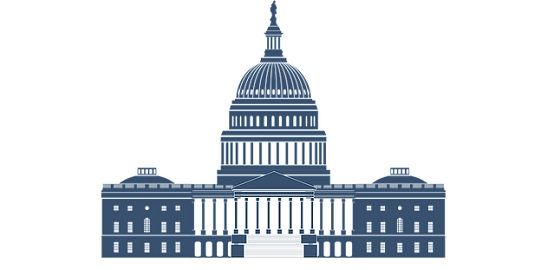 Every country in the world has its own constitution, according to which policies are framed, government bodies and institutions function and decisions are made. In finer terms, it is the constitution, that covers all the aspects of the political system adopted by the country. There are two forms of government, Parliamentary and Presidential. In Parliamentary System, the political party winning the majority seats in the parliament makes the government and elects a person from among themselves as the Prime Minister who is the head of the Government.
Every country in the world has its own constitution, according to which policies are framed, government bodies and institutions function and decisions are made. In finer terms, it is the constitution, that covers all the aspects of the political system adopted by the country. There are two forms of government, Parliamentary and Presidential. In Parliamentary System, the political party winning the majority seats in the parliament makes the government and elects a person from among themselves as the Prime Minister who is the head of the Government.
On the other hand, in the presidential form of government, the President is the chief executive, who is directly elected by the people or by the members of the electoral college. The difference between the Parliamentary and Presidential form of government is discussed in the article in detail.
Content: Parliamentary System Vs Presidential System
Comparison Chart
| Basis for Comparison | Parliamentary form of Government | Presidential form of Gorvernment |
|---|---|---|
| Meaning | In Parliamentay system the legislative and executive body of government are closely related, while the judiciary is independent of the other two bodies of government. | In Presidential system, the legislative, executive and judiciary body of the government are independent of each other. |
| Executive | Dual executive | Single executive |
| Accountability | The executive is accountable to the legislature. | The executive is not accountable to the legislature. |
| Powers | Concentrated | Divided |
| Ministers | Only the members of Parliament can be appointed as minster. | Persons outside the legislature are appointed as ministers. |
| Dissolution of lower house | Prime Minister can dissolve the lower house before the expiry of its term. | President cannot dissolve lower house. |
| Tenure of Executive | Not fixed | Fixed |
Definition of Parliamentary form of Government
Parliamentary form of government represents a system of democratic governance of a country, wherein the executive branch is derived from the legislative body, i.e. the Parliament. Here, the executive is divided into two parts, the Head of the State, i.e. President, who is only the nominal executive and the Head of the Government, i.e. Prime Minister, who is the real executive.
As per this system, the political party getting the maximum number of seats during federal elections, in the Parliament, forms the government. The party elects a member, as a leader, who is appointed as the Prime Minister by the President. After the appointment of the Prime Minister, the Cabinet is formed by him, whose members should be out of the Parliament. The executive body, i.e. the Cabinet is accountable to the legislative body, i.e. Parliament
This system is prevalent in the countries like India, Japan and Canada.
Definition of Presidential form of Government
When a country follows the Presidential form of Government, it denotes that there is only one person as the head of the state and government, i.e. the President. The election of the President is made directly by the citizens of the country or sometimes by the members of the electoral college for a fixed period.
The President elects some ministers as the Secretary and forms a small Cabinet, who assist in governing the country. Neither the President nor the Secretaries are accountable to the Congress (Parliament) for their acts. Indeed, they do not attend the sessions as well.
This form of government can be found in the countries like United States of America, Russia, Brazil and Srilanka.
Key Differences Between Parliamentary and Presidential form of Government
The points presented below are important so far as the differences between parliamentary and presidential form of government is concerned:
- The Parliamentary system of government is one in which there exists a harmonious relationship between the legislative and executive body, while the judiciary body works independently. As against this, in Presidential form of government, the three organs of the government work independently of each other.
- In Parliamentary form of government, the executive is divided into two parts, i.e. the Head of the State (President) and the Head of the Government (Prime Minister). On the contrary, the President is the chief executive of the Presidential form of Government.
- In the Parliamentary form of government, the executive body, i.e. the Council of Ministers is accountable to the Parliament for its acts. Conversely, in the Presidential form of Government, there is no such accountability, i.e. the executive body is not accountable to the Parliament for its acts.
- Fusion of powers exists in the Parliamentary system, whereas the powers are separated in Presidential system.
- In Parliamentary form, only those persons are appointed as ministers in the executive body who are the members of Parliament. Unlike, in Presidential form, persons other than those working in the legislature can be appointed as secretaries.
- In Parliamentary government, the Prime Minister has the power to dissolve the lower house before the completion of its term. As opposed, the President cannot dissolve the lower house, in Presidential government.
- The tenure of the executive is not fixed in Parliamentary government, as in, if a no-confidence motion is passed in the Parliament, the Council of Ministers is dismissed. Contrary to this, the executive has a fixed term in the Presidential government.
Video: Parliamentary Vs Presidential System
Conclusion
The cabinet members possess double membership, i.e. of legislative and executive organ of government. Contrary to this, in the presidential form of government, the members of the cabinet possesses the membership of executive organ only.
When it comes to dominance, in the Parliamentary System, the President is only the titorial head, while the real powers lie in the hands of the Prime Minister. On the contrary, the President has the supreme power in the Presidential System.






Aditya says
Perfect!
Ayub Khan says
Very good lesson to understand the difference between the two forms of gvernmental system.
Precious Chinasa says
Yes it is a very good lesson about the two forms of government
Salalah Okumu says
This is excellent for having helped me to comprehend the forms of government
Anmut Lakew says
Thank you for the note
Praveen says
Thanks .The explanation is really easy to understand!
Ashutosh Singh says
Thank you so much The team of key differences for this answer
Benn Ten says
Can I use this note for LLB course of the question is…. Contradiction between parliament and presidential form of government
Surbhi S says
Yes you can use it for your notes
Lisa says
This is awesomely simplified notes and great
Thanks 🤝
Narayan says
helpful
Kali-Rose W says
Thats what she said.
Divyansh says
I used this information in my project, it was very good
Muri joy says
Thank you so much for the note
Sarah Adutwumwaa says
Very nice article.
It has really helped me to understand some concepts in both forms of government
Kali-Rose W says
I used this stuff on my work and i got an 99% this is so good
josiyah piper says
it’s good for notes
Ibe chidimma says
Thanks 👍
Seun says
using in my debate
THANKS FOR THE NOTE👍👍👍👍👍
Kwajo swag says
Very good source for your answering of your questions
Lukman Kareem says
Nice explanation….
thank you.
Victoria Eric says
Yes, I agree 👍
Victoria Eric says
Thanks for the lesson 👍